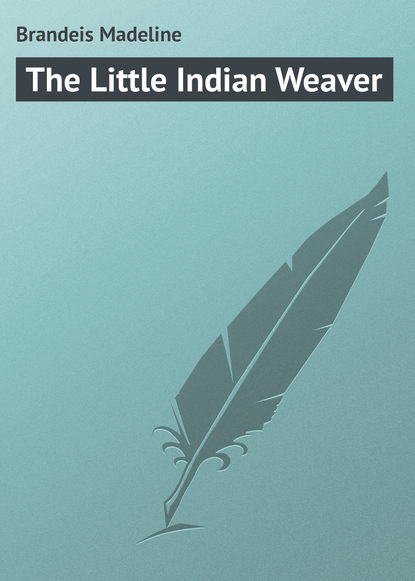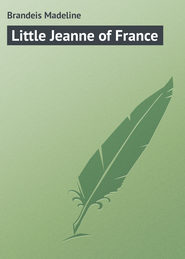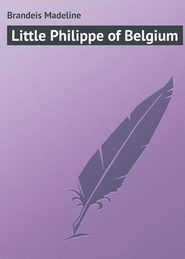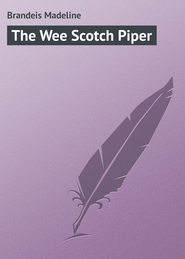По всем вопросам обращайтесь на: info@litportal.ru
(©) 2003-2024.
✖
The Little Indian Weaver
Настройки чтения
Размер шрифта
Высота строк
Поля
Then Bah's mother looked over at Billy. She beckoned him to come and he came. Her black, beady eyes followed him until he stood before her. He did not know what to think of the smile she gave him. Was it friendly, or was she mocking him?
Billy had never before met an Indian woman, and he was puzzled by the black eyes so deep and mysterious. Billy found himself staring, and was suddenly aware of himself standing before a lady with his hat on. He doffed his sombrero and in doing so he smiled. Bah's mother smiled back, and said in a musical voice, "Sit down."
He sat beside her. Bah was on her other side, absorbed in her doll. Billy smiled into the face of the Indian woman and she put her arm about him and said:
"White boy good friend to Indian!"
CHAPTER V
AT BAH'S HOGAN
"Why do you call her 'Bah?' Is it because she watches the sheep?"
Billy was asking many questions of Bah's mother and he found her anxious and ready to answer him. She had already told him her name, which showed that she liked him, and Billy was pleased. He wanted to hear many things about this family, especially about his little friend, Bah.
Her mother shook her head. "No, not why. I tell you story why we call her Bah." And this is what Bah's Mother told Billy:
Many Indians name their babies in this way: Soon after the baby is born, the mother straps it to the baby cradle and goes to the door of her hogan – what she first sees as she looks out upon the world, is what she calls her newborn. If she sees a running deer – then the baby is called "Running Deer." If her first glance falls upon a lazy bull, resting himself, the baby will bear the name of "Sitting Bull."
Then, there is another way of naming the Indian baby, and this is the way Bah was named. When she was a wee papoose, her mother would make the bread and set her down beside the stone oven where she could watch from her baby cradle. As you perhaps know, the Indian baby cradle is very plain, and simply made. It is only a board upon which the baby is strapped until he is able to walk. The Indians have some very good reasons for doing this. They wish to train children to be uncomfortable and not to cry.
Strapped as they are to this board, they are only able to move their hands and must lie straight and stiff. This is also the reason why all Indians are so straight. Then the Indian mother's mind is at rest, when she can have her baby securely tied in the cradle, strapped to her back, or if she puts him down any place she knows that he is safe. She can hang him on the wall while she works, which was what Bah's mother did when she made the bread.
Now, bread in Navajo is "Bah," and this is how they make it. First, they take some corn and put it into a hollow stone. With another stone they smash the corn until it is fine. They then mix it with water, knead it and flatten it into small flat cakes which look like pancakes. It then goes into the big stone oven, which is always out of doors, and when it is cooked it is taken out and placed on a cool stone.
At this point Bah, who you see was at that time only a papoose, would cry and reach out her little hands for some "Bah". As soon as Mother would put a crisp piece into her little hand she would stop crying and chew on it contentedly. So they called her "Bah" because she cried for bread.
"So your name is 'Bread!' That's a nice name. And I'm so hungry that I could eat you now!" said Billy, rising to his feet and making a pretense at biting.
Bah laughed and hid her face behind the new doll. Mother chuckled to herself, as Indians do when they are amused. Then she said: "I make some real 'Bah' for you."
"Oh, that would be fine!" said the boy.
Then, realizing that he had practically asked for it, he hung his head and added: "But don't do it if it's too much trouble."
The remark seemed to amuse the Indian woman, for she chuckled again as she arose, but she did not answer him. Instead, she began to prepare for the making of the bread.
Billy watched the process with great interest, and ate with even more interest when it was finished. The Bah was delicious, he thought.
It tasted like – no, it didn't taste like anything Billy had ever eaten before.
After having done justice to the new food, the boy was shown in and about the hogan by his little friend. She took him to her "play hogan." It was made for her by her father and was just like the one they lived in, except that it was only large enough for one child to fit into.
"We could have lots of fun here, Bah. I'd like to come again and play with you. May I?" Billy asked.
"Yes, come much," answered Bah happily.
"And we'll play that I'm an Indian Chief and you are the Indian Mother, and the doll – oh, we haven't named the doll yet, have we?" said Billy.
"No, doll no name yet," said Bah.
"Well, let's see, how shall we do it?" Billy mused. "Suppose you come out of your play hogan and look around. The first thing you see will be what we'll name her."
"Yes, I do," said Bah – and obediently she entered the small hogan.
"Now come out, but close your eyes," called Billy.
Out came the little girl, holding her papoose doll. She stood, with closed eyes, in the door of her hogan, and waited for further instructions.
"Open your eyes!" called the boy, "and tell me what you see!"
Bah's eyes opened slowly, dramatically. Her head was raised and as she looked she saw a bluebird in a tree. Billy followed her gaze and saw what she did.
"How lucky!" thought he, "Now the child will have a beautiful name!"
But Bah looked down at her baby and smilingly said: "Bah name you 'Doli'."
Billy was horribly disappointed. "Oh, listen, Bah. Don't do that! Why every girl calls a doll 'dolly.' That's common – name her 'Bluebird.' You saw one, didn't you?"
Bah was still smiling as she said: "Yes, I see and I name papoose 'Bluebird' in Navajo – that is 'Doli'."
A grin spread from one of Billy's ears to the other. "That's the time you fooled me!" said he.
They were laughing over Bah's joke when they saw some one coming towards them. "My father come home," cried Bah, and ran to meet him.
As he came nearer Billy saw that he was very tall and very straight. He wore white trousers tied below the knees with red ribbons, a sash about his waist, and many beads hanging from his neck. His hair was long and tied in the back, much the same as Bah's, with a white cloth.
He came over and held out his hand to Billy. He said: "I hear you good to little Bah. Me Bah's father."
Billy was thrilled to shake the hand of such a fine big Indian, and to find that he was treating him as a friend.
"He Big Chief," said Bah proudly.
"Oh, are you a Big Chief?" asked the boy. A thought began to flicker through his mind. He would surprise his father – his father who was hobnobbing daily with Big Chiefs and Medicine Men, and who thought Billy was wasting his time.
He wouldn't say a word to Father, but he'd begin tonight and he'd write a story, all about Bah, her mother and her father, the Big Chief. He'd come back again tomorrow and learn more from them, for hadn't Bah said "Come much" – which meant he was welcome.
"Well, I have had such a good time with Bah – Mr. – a-a"
"My name 'Fighting Bull,'" said the brave (as Indian men are called).
"I know why you're called Fighting Bull," said Billy, sagely. "One time when you were little your Mother must have seen a bull fight!"
CHAPTER VI
BILLY STARTS HIS STORY
The next morning found Billy fully dressed and ready to leave before his parents were even awake. He could hardly wait for them to be astir and as soon as he heard his mother's step in her room he knocked at the door. Mother opened it and stood amazed.









